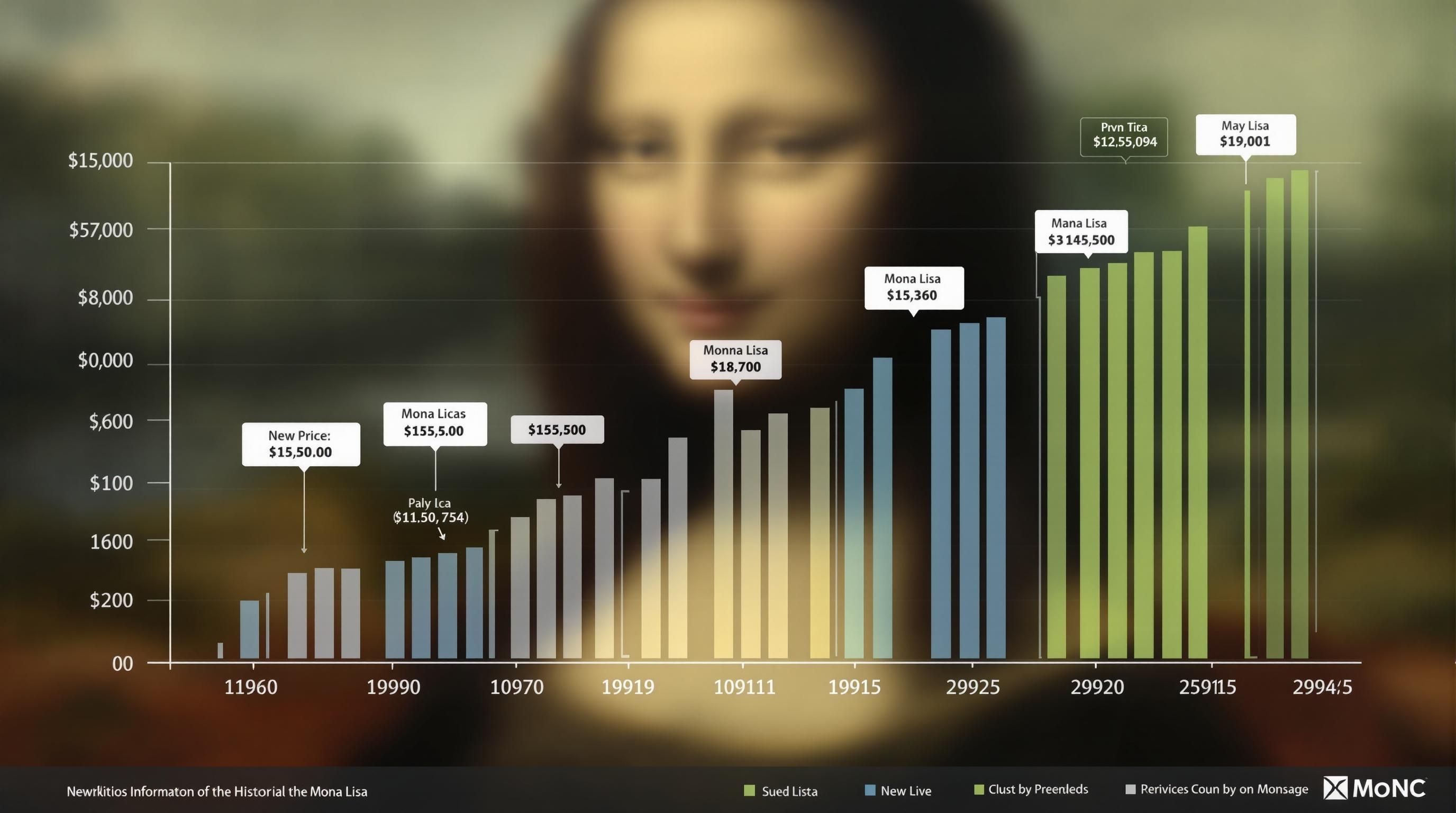Do you have a painting tucked away in your attic or a print inherited from a relative that might be worth something? Understanding artwork value is both an art and a science, requiring knowledge of aesthetics, history, provenance, and market dynamics. Whether you’re a collector, inheritor, or simply curious about a piece you own, this comprehensive guide will walk you through the process of determining what your artwork is really worth.
The Fundamentals of Art Valuation
Artwork valuation involves a complex interplay of objective and subjective factors. While beauty may be in the eye of the beholder, the art market follows specific patterns and principles that help establish monetary value. Before diving into specific valuation techniques, it’s important to understand that artwork value isn’t static—it fluctuates based on market conditions, changing tastes, and numerous other variables.
The first step in valuing artwork is determining its authenticity. An authentic piece by a recognized artist will typically be worth significantly more than a reproduction or a work by an unknown artist. According to the Smithsonian American Art Museum, establishing authenticity often requires examining signatures, materials, techniques, and sometimes even scientific testing.
Next comes evaluating the artwork’s condition. Even minor damage can significantly impact value. Look for tears, discoloration, fading, or restoration work. While some restoration can be done skillfully, excessive or poor-quality restoration can decrease a piece’s value.
Key Factors Influencing Artwork Value
Artist Reputation
An established artist's work generally commands higher prices
Condition Impact
The difference in value between excellent and poor condition
Provenance Premium
Increase in value with documented ownership history
Distinguishing Originals from Prints
According to Austin Galleries, the first step in determining if your art is valuable is identifying whether it’s an original painting or a print. Original paintings are one-of-a-kind works created directly by the artist, while prints are reproductions that can exist in multiple copies.
To identify an original painting:
Original Artwork Identification
Check these indicators to determine if your piece is an original:
- Visible brush strokes or palette knife marks on the surface
- Texture that varies across the surface of the artwork
- Uneven paint application with thicker areas
- No dot patterns when examined with a magnifying glass
- Artist's signature in the same medium as the artwork
For prints, look for:
- Regular dot patterns (visible under magnification)
- Perfectly flat surface with uniform texture
- Edition numbers (e.g., 15/100) indicating limited edition prints
- Plate marks or impression lines around the image
- Printer’s information or copyright notices
It’s important to note that not all prints are of equal value. Limited edition prints by renowned artists can be quite valuable, especially if they’re signed and numbered by the artist. Open edition prints, which are mass-produced without a set limit, typically have lower value.
The Fine Art Trade Guild explains that many prints people find in their homes are decorative reproductions rather than fine art prints, which significantly impacts their value. Understanding the difference between original fine art prints (like lithographs, etchings, or serigraphs) and mass-produced decorative prints is essential for proper valuation.
The Importance of Provenance
According to askART, knowing the lineage of ownership and exhibition history can substantially add to the value of your artwork. Provenance serves as a crucial factor in establishing the authenticity and historical significance of a piece.
Good provenance might include:
- Sales receipts from galleries or auction houses
- Exhibition catalogs featuring the artwork
- Letters of authenticity from recognized experts
- Previous appraisal documents
- Photographs of the artwork in historical settings
- Mentions in artist catalogues raisonnés (comprehensive listing of an artist’s work)
- Labels or stamps on the back of the artwork
The more complete and prestigious the provenance, the more it can enhance value. For example, artwork previously owned by celebrities, notable collectors, or important institutions often commands premium prices. Similarly, pieces that have been exhibited in major museums or galleries typically have higher values.
How Provenance Develops Over Time
- Creation
Artist's Studio
Documentation begins with the artist’s records, certificates of authenticity, or dedications. - First Sale
Gallery or Direct Purchase
Initial sales receipts, gallery documentation, and photos establish the beginning of the ownership chain. - Exhibition History
Museum or Gallery Showings
Exhibition catalogs, labels, and reviews provide institutional validation and historical context. - Subsequent Sales
Auction Records or Private Transfers
Each transaction adds to the ownership history, ideally with proper documentation. - Present Day
Current Ownership
Complete provenance should trace the artwork’s journey from creation to current ownership.
When researching your artwork’s provenance, look for any documentation that came with the piece. Check the back of the artwork for gallery labels, auction house stickers, or inventory numbers. These can provide valuable clues about the artwork’s history and help establish its authenticity and value.
Using Online Resources and Databases
Several reputable online databases provide access to millions of auction results and artist information. These platforms allow you to compare your artwork to similar pieces that have sold recently, giving you an idea of current market values.

Some of the most comprehensive art price databases include:
- Artprice - The world leader in art market information with over 30 million auction results
- Artnet Price Database - Provides transparent price research from auction records dating back to 1985
- FindArtInfo - Free basic search with options for more detailed information
- askART - Specializes in American art but covers international artists as well
- Heritage Auctions Art Value Guide - Particularly useful for American and Western art
When using these databases, be as specific as possible with your search criteria. Include the artist’s name, the title of the artwork (if known), medium, dimensions, and year of creation. Look for pieces that most closely match your artwork in terms of size, subject matter, period, and condition.
Many of these databases offer free basic searches, but detailed information and access to complete auction records typically require a subscription or per-use fee. However, even the free information can provide valuable insights into whether your artwork might be valuable enough to warrant further investigation.
Online Art Database Comparison
Features and costs of popular art valuation resources
</tbody>
</table>
Market Factors Affecting Art Value
According to a discussion on Reddit’s ArtistLounge, the commercial value of art is largely determined by an artist’s career milestones and the basic economic principle of supply and demand. Understanding these market dynamics can help you better assess your artwork’s current and potential future value.
Key market factors to consider include:
Artist’s Market Positioning: Where an artist stands in their career significantly impacts value. Established artists with museum exhibitions, gallery representation, and critical recognition command higher prices than emerging artists.
Scarcity and Rarity: Limited supply increases value, especially if the artist is deceased or produced few works. Rare works from an artist’s most sought-after period typically fetch premium prices.
Art Market Cycles: Like other markets, the art market experiences cycles of expansion and contraction. Values tend to rise during strong economic periods and may decline during recessions.
Changing Tastes and Trends: Collector preferences evolve over time. Artists or movements that fall out of favor may see declining values, while rediscovered artists can experience dramatic price increases.
Media Attention and Exhibition History: Major museum exhibitions, scholarly publications, or media coverage can boost an artist’s profile and subsequently increase values.

According to Gray’s Auctioneers, significant price indicators include:
- Works by listed artists (those included in standard art reference sources)
- Limited edition prints numbered and signed by the artist
- Original paintings with quality frames (often indicating the owner valued the piece)
- Artwork from desirable periods or movements
It’s important to remember that art values can fluctuate significantly. What’s valuable today might not be tomorrow, and vice versa. Collecting comprehensive market information and monitoring trends can help you better understand your artwork’s current and potential future value.
Professional Appraisal Options
The Smithsonian American Art Museum recommends finding an accredited appraiser to determine the value of your artwork if you suspect it might be valuable. Professional appraisers are trained specialists who provide written statements of value for a fee.
When seeking a professional art appraisal, consider these options:
Certified Appraisers: Look for appraisers accredited by organizations like the American Society of Appraisers (ASA), the International Society of Appraisers (ISA), or the Appraisers Association of America (AAA).
Auction Houses: Major auction houses like Sotheby’s, Christie’s, and Bonhams offer appraisal services and can be particularly helpful for high-value items. As the Fine Art Trade Guild suggests, these houses specialize in valuable fine art and can provide expert opinions.
Specialized Art Galleries: Galleries that focus on specific types of art or periods may offer appraisal services, especially if they deal in works similar to yours.
Museum Curators: While many museums have policies against providing valuations, some curators may be able to provide insights or referrals to appropriate specialists.
Online Appraisal Services: Several reputable online services connect you with professional appraisers who can evaluate your artwork based on photographs and information you provide.
When working with an appraiser, be prepared to provide:
- Clear photographs of the front, back, and any signatures or markings
- Measurements of the artwork (height, width, and depth if applicable)
- Any documentation you have about the artwork
- Information about how you acquired the piece
- Details about the piece’s condition
Professional appraisals typically cost between $125 and $350 per hour, with a minimum fee of around $250-$500. However, for valuable artwork, this investment can provide crucial documentation for insurance, sale, donation, or estate planning purposes.
DIY Value Assessment Checklist
Before investing in a professional appraisal, use this checklist to gather information and make an initial assessment of your artwork’s potential value:
Artwork Value Assessment Checklist
Complete these steps to conduct a preliminary evaluation of your artwork:
- Identify the artist by looking for signatures, monograms, or stamps
- Determine if the work is an original or reproduction
- Measure the artwork's dimensions (height × width)
- Assess the overall condition, noting any damage or repairs
- Photograph the front, back, signature, and any labels or markings
- Research the artist's sales history using online databases
- Gather any provenance documentation you have
- Check for edition numbers on prints
- Research comparable works that have sold recently
- Consider the subject matter and its relevance to the artist's body of work
Following these steps will help you gather the essential information needed to either make an educated estimate of your artwork’s value or provide a professional appraiser with the details they need for a more accurate assessment.
According to Heritage Auctions’ Art Value Guide, you can find the value of fine art in three key steps: check if the artist appears in auction archives, look up past sales of similar works, and compare your piece to those with documented values.
Understanding Different Types of Value
When assessing artwork value, it’s important to understand that different contexts call for different types of valuation. These distinctions can significantly impact the final value determination:
Fair Market Value: The price at which a willing buyer and willing seller would agree, with neither being under pressure to complete the transaction. This is commonly used for tax purposes, including donations and estate valuations.
Retail Replacement Value: The cost to replace the item with a similar piece in a retail setting. This is typically higher than fair market value and is used for insurance purposes.
Auction Value: The estimated price an item might achieve at auction, which can vary based on the auction house, location, and current market conditions.
Wholesale Value: The price a dealer might pay to acquire the piece for resale, typically lower than retail or fair market value.
Liquidation Value: The amount expected in a forced or time-constrained sale, such as an estate liquidation or bankruptcy proceeding.
The purpose of your valuation will determine which type of value is most appropriate. For insurance, you’ll want retail replacement value. For selling to a dealer, wholesale value is more realistic. For donation purposes, fair market value is required by tax authorities.
Professional appraisers will specify which type of value they’re providing in their appraisal documents. If you’re seeking an appraisal, be clear about your purpose so the appraiser can provide the appropriate valuation type.
The Role of Technology in Art Valuation
Digital tools are increasingly important in the art valuation process, making research and authentication more accessible. According to the “People Also Ask” section in our research, there are now smartphone apps designed specifically for checking artwork values.
For example, apps like “Painter Values Check” allow users to analyze artwork in real-time through their device’s camera or by importing images from their photo gallery. These tools can help identify key visual elements, color schemes, and sometimes even artistic styles that might indicate value.
Other technological approaches to art valuation include:
Image recognition software: Advanced algorithms can help identify artists by comparing brushwork patterns, color usage, and composition to known examples.
Blockchain provenance tracking: Some artworks now come with digital certificates of authenticity stored on blockchain, creating an immutable record of ownership and provenance.
Big data analysis of market trends: Sophisticated analytical tools can track thousands of auction results to identify market patterns and predict future values.
Digital condition reporting: Specialized imaging techniques like ultraviolet, infrared, and x-ray can reveal condition issues, previous restorations, or hidden aspects of artworks that impact value.
Online marketplaces with price transparency: Platforms like Artsy provide public access to price information that was once available only to industry insiders.
While these technological advances provide valuable tools, they should complement rather than replace expert human judgment. The most accurate art valuations still combine technological analysis with connoisseurship, market knowledge, and aesthetic appreciation.
Common Questions About Artwork Value
How do I find the value of artwork I own?
To determine the value of your artwork:
- Research the artist through online databases, art books, or artist directories
- Determine if it’s an original or a reproduction
- Assess its condition carefully
- Look for comparable works that have sold recently
- Gather documentation on provenance and history
- Consider consulting a professional appraiser, especially for items you believe may be valuable
For potentially valuable pieces, a professional appraisal from a certified art appraiser is the most reliable method for determining accurate value.
How do you get artwork professionally valued?
To get artwork professionally valued:
- Find a qualified appraiser through organizations like the American Society of Appraisers, International Society of Appraisers, or Appraisers Association of America
- Contact major auction houses like Sotheby’s, Christie’s, or Bonhams for high-value items
- Prepare clear photographs and documentation about the artwork
- Be specific about the purpose of your valuation (insurance, sale, donation, etc.)
- Expect to pay $250-$500 or more for a professional written appraisal
When selecting an appraiser, verify their credentials and specialization in your type of artwork. Different appraisers specialize in different periods, regions, or mediums.
What is the app that checks painting value?
There are several apps that can help check painting values:
- Painter Values Check - Allows real-time analysis through your camera or imported images
- Magnus - Lets you scan artwork in galleries or from images to get pricing information
- Smartify - Identifies artworks and provides information, though focuses more on identification than valuation
- Artsy - While not specifically an app for valuation, provides market data and price points
These apps can provide preliminary information, but for valuable artwork, they should be considered starting points rather than definitive valuations. Professional appraisal is still recommended for significant pieces.
What are values in artwork from an artistic perspective?
In artistic terms, “values” refer to the lightness or darkness of colors within an artwork, which is different from monetary value. Value in this context:
- Adds dimension and depth to a piece
- Creates contrast between elements
- Helps establish focal points
- Contributes to the overall mood and atmosphere
Artists create value through different shading techniques using various line types and approaches to light and shadow. Strong command of value is considered a fundamental artistic skill and can contribute to an artwork’s quality and, indirectly, its market value.
From the Cascadia Art Museum’s definition, value in art refers specifically to the lightness or darkness of colors and is a fundamental element of art alongside line, shape, form, space, texture, and color.
How can I tell if my painting is valuable without an appraisal?
While a professional appraisal is most reliable, these indicators might suggest your painting has value:
- It’s an original work, not a reproduction
- It bears the signature of a known artist
- The artist appears in art reference books or auction databases
- It’s in good condition with no significant damage
- It comes from a desirable period in the artist’s career
- It has documented provenance or exhibition history
- The subject matter is typical of the artist’s valued works
- It’s framed in a high-quality, period-appropriate frame
According to Gray’s Auctioneers, these are among the top signs your painting may be worth over $1,000. Remember that preliminary research can give you an indication, but only a professional appraisal can provide an accurate valuation.
Does the frame add value to artwork?
Yes, frames can add value to artwork in several ways:
- Original or period frames that match the artwork’s era can significantly enhance value
- Frames by notable frame makers or with artistic merit in their own right add value
- High-quality materials like gold leaf, hand-carved wood, or fine craftsmanship increase worth
- Frames commissioned by the artist specifically for the work are particularly valuable
However, low-quality, damaged, or inappropriate frames can detract from an artwork’s value. In general, original frames in good condition that are appropriate to the artwork’s period and style will enhance value, sometimes substantially for important works. For very valuable artwork, even the frame alone might be worth a significant amount.
Conclusion: Making Informed Decisions About Your Artwork
Understanding the value of artwork requires a multifaceted approach that considers authentication, condition, provenance, artist reputation, and market dynamics. Whether you’re looking to sell, insure, donate, or simply satisfy your curiosity about a piece in your possession, taking the time to research thoroughly and consult appropriate resources will yield the most accurate results.
For pieces with potential significant value, professional appraisals remain the gold standard. However, the preliminary research steps outlined in this guide can help you determine whether such an investment is warranted and provide you with essential information to share with an appraiser if you decide to proceed.
Remember that art values fluctuate over time based on changing market conditions and tastes. What might not be valuable today could become sought-after in the future, and vice versa. Regular reassessment of valuable pieces is recommended, particularly for insurance purposes or if you’re considering selling.
Most importantly, while monetary value is one aspect of artwork, it shouldn’t overshadow the personal, cultural, and aesthetic value that art brings to our lives. Even pieces without significant market value can hold immense personal importance and continue to provide enjoyment and inspiration for generations.
External Resources for Art Valuation
askART Price Art Database
Comprehensive database for researching art prices with information on over 300,000 worldwide artists and millions of auction results.
Artprice.com
World leader in art market information with access to 30 million auction results and indices from 7,200 auction houses around the world.
FindArtInfo
Free basic art appraisal tool allowing you to value fine art by comparing it with recent auction prices of similar pieces.
Smithsonian American Art Museum: How Much Is Your Object Worth?
Expert guidelines from the Smithsonian on determining the value of artwork and finding qualified appraisers.
Artnet Price Database
Transparent price research from auction records dating back to 1985, allowing independent assessment of artwork values.
Fine Art Trade Guild: How to Value Art
Expert advice from the Fine Art Trade Guild on how to value prints and paintings, including when to consult specialists.
Heritage Auctions Art Value Guide
Three-step guide to finding the value of fine art through auction archives and comparative analysis.
By utilizing the resources, techniques, and professional services outlined in this guide, you’ll be well-equipped to navigate the complex world of art valuation. Whether your artwork’s value lies primarily in its aesthetic appeal, historical significance, or market demand, understanding these factors will help you appreciate and manage your art assets more effectively.
Get a Professional Appraisal
Unsure about your item’s value? Our certified experts provide fast, written appraisals you can trust.
- Expert report with photos and comps
- Fast turnaround
- Fixed, upfront pricing
No obligation. Secure upload.
| Category | Price | Notes |
|---|---|---|
| Artprice | $29-$249/month | 30+ million auction results, market analytics, artist biographies |
| Artnet | $175-$350/month | Auction results since 1985, gallery network, comprehensive analytics |
| FindArtInfo | Basic search free, $10-30 per detailed report | 14+ million auction records, signature database, artist directory |
| askART | $20-$30/48hr access | Focuses on American artists, includes biographies and market data |




